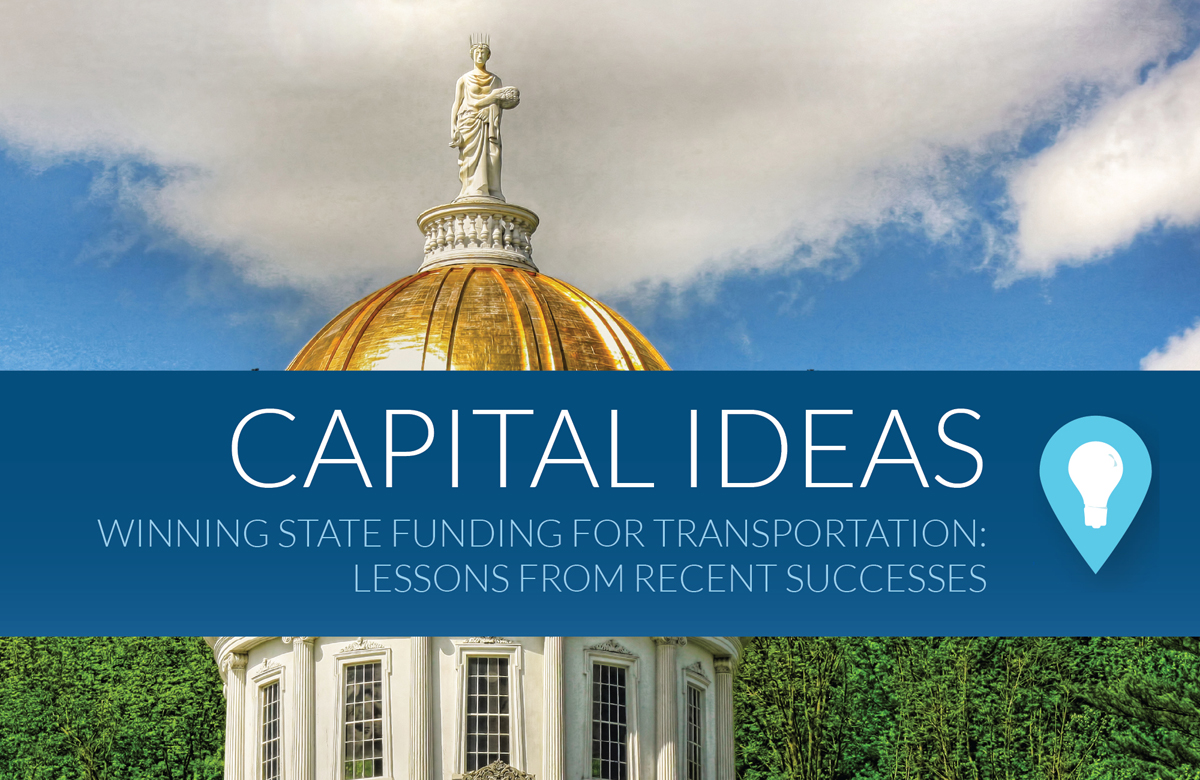Related Resources
State Transportation FundingState Transportation Funding – 2015 Report
Capital Ideas: Winning State Funding for Transportation
 States face an increasing challenge in funding their mounting transportation needs. Their primary sources of revenue — taxes on gasoline and diesel fuel — have been depressed as vehicles become more efficient, per-person driving mileage declines and construction costs rise along with inflation.
States face an increasing challenge in funding their mounting transportation needs. Their primary sources of revenue — taxes on gasoline and diesel fuel — have been depressed as vehicles become more efficient, per-person driving mileage declines and construction costs rise along with inflation.
Meanwhile, states are further challenged by uncertain federal funding, which has been squeezed by the same forces. Frozen at 1993 levels, the federal gas tax has lost approximately one-third of its purchasing power. In 2012, Congress did something it had not done in decades, passing a federal transportation law that did not increase funding.
The same is true in many states. Twenty-four states have gone a decade or more without raising their gas taxes. For example, before Massachusetts passed a transportation revenue package in 2013 the state gas tax had not changed since 1991 and as a result it had lost almost half of its purchasing power. Meanwhile, an aging infrastructure in need of repair and the demands coming from demographic and economic changes mean states need more revenue, not less.
Since 2012, twelve states have responded to that challenge by enacting new revenue sources for transportation, while dozens more have considered such legislation. Each legislative package was crafted to respond to the unique challenges of the state where it was passed, but each contains lessons for other states looking to address their funding needs.
One key lesson worth noting up front: Legislators who supported such moves have met with little to no pushback at the polls. In fact, a Transportation for America analysis of the most recent election cycle found that 98 percent of the supportive lawmakers up for re-election won the primary following their vote — and we found no evidence that any lost as a direct result of their vote.
Transportation for America has closely followed efforts in legislatures across the country to put transportation funding on sound footing. This report highlights critical factors common to many of the campaigns and closely examines several successful campaigns. Learning successful strategies and tactics from other states can be a valuable way for advocates, legislators, and local leaders to build winning campaigns in their own states.



